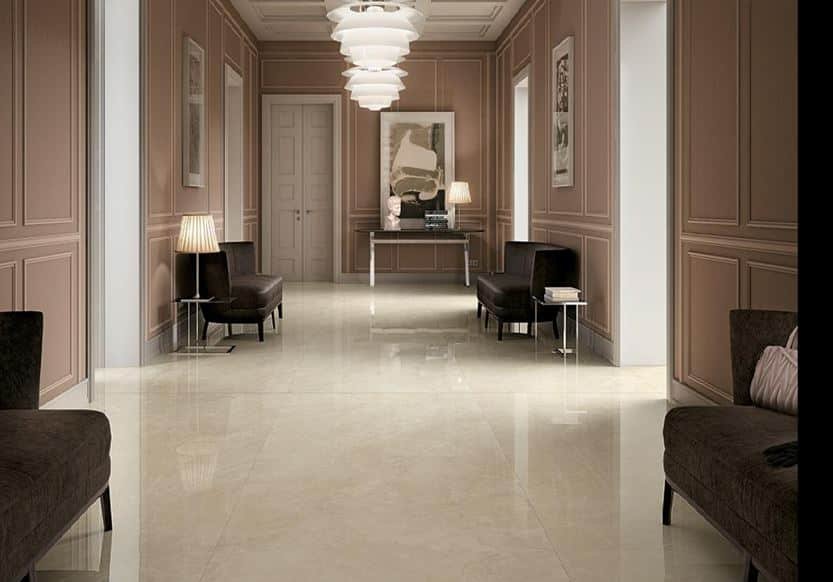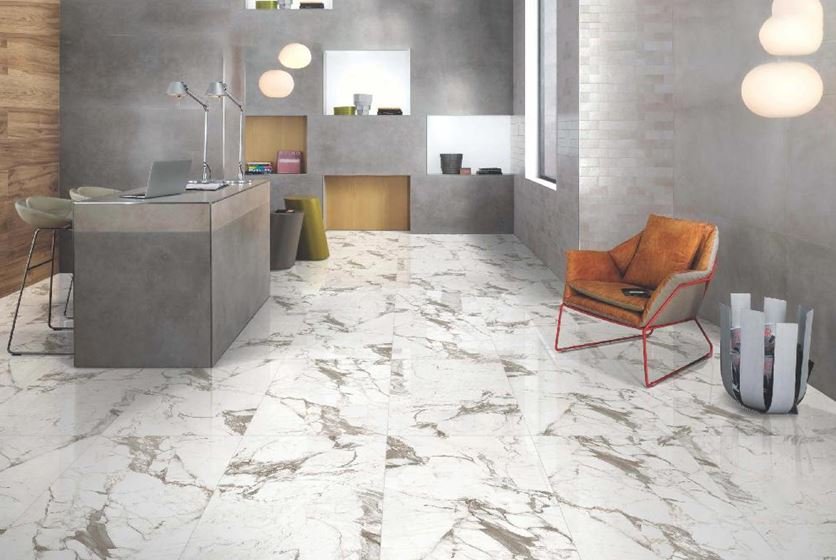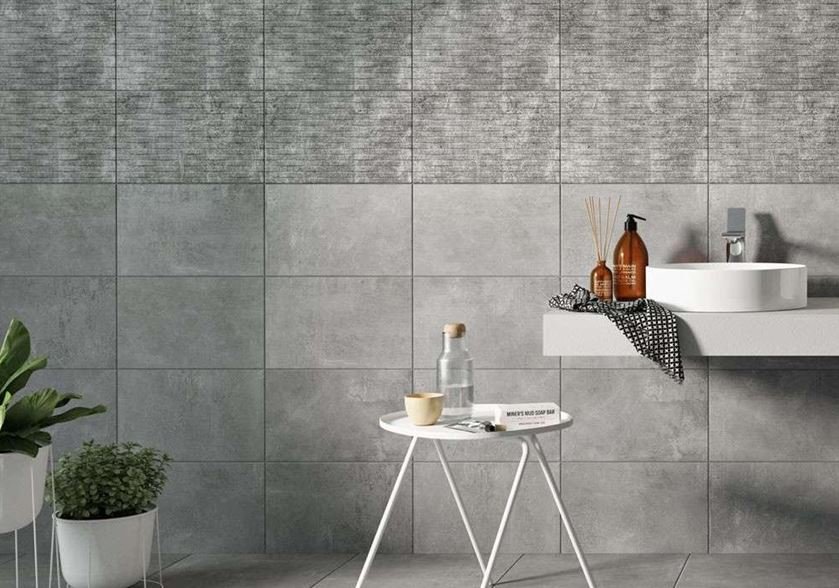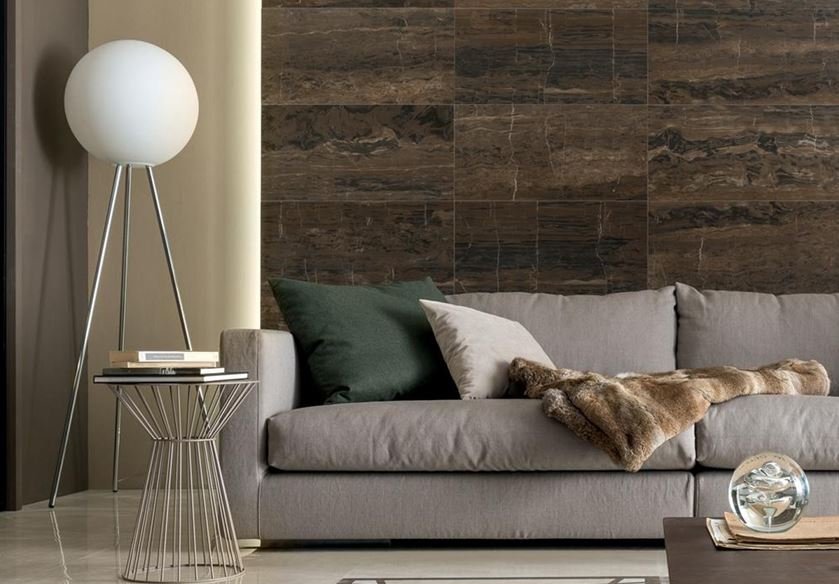Bathroom
Bathroom Tile Repair

The bathroom tile during operation is exposed to aggressive mechanical and chemical influences, which significantly impairs its decorative and protective characteristics. In that case, the most rational solution would be to repair broken bathroom tiles, which can be done manually without special skills. We will study the technology of carrying out repair works in this article.
Causes and damage factors
The main reasons why tiles lose their appearance include:
- violation of tile technology
- use of tiles with defects, for example, the presence of micro-cracks in the enamel
- rest on an unstable base, for example, on a wooden floor, which during operation changes position under pressure or due to temperature factors
- external mechanical influences on the tile, in particular, the fall of heavy objects, the pressure of furniture and other occasional loads
- cracks during construction and installation work, in particular when drilling holes for fasteners or laying pipes
- vibration
- exposure to humidity or extreme temperatures
The presence of voids in the tile glue which, even with light loads, can lead to flaking of the finish or the appearance of cracks.
The likelihood of chipping and cracking increases when using poor quality tiles, as well as those produced with a certain technology, for example, monochromatic. Another group of factors that affect the appearance of defects are errors in the design and installation of the coating. In particular, labeling requirements must be strictly met and tiles must not be used for application on floors. Improper installation on plasterboard or wooden surfaces is also common. In the latter case, due to the influence of humidity and other factors, the base deforms, which causes the tile to separate or destroy.

Replacement or repair is done most of the time for the following reasons:
- technical, aesthetic, design flaws in the finish, which require replacement immediately after installation or after a long time
- damage to the integrity of the plate for the above reasons
- separation of tiles with or without glue
- loss of appearance of seams or violation of their tightness
If there are straight cracks along the entire finishing line or characteristic curvilinear cracks along the seams, the most likely reason is the presence of defects in the structure of the building, for example, shrinkage of houses in a bar or violations of the foundation calculation. The quality of the joints can also be affected by exposure to moisture and other aggressive media.
The massive detachment of the mortar or glue finish indicates the presence of vibration, temperature effects, vibration, sedimentation, and mobility of the base. When renovating these facilities, it is recommended to place new tiles with mesh reinforcement.
The massive detachment of tiles without a significant amount of glue or mortar occurs due to the poor adhesion of these materials to the back surface of the tile. This can manifest itself when using an excessively thick layer of masonry mixture, when it is improperly prepared or selected, with sudden changes in temperature (spaced heating and other devices) due to the difference in the coefficients of thermal expansion of the finish and the glue, etc.

Necessary materials and tools
For self-repairing tiles, it is not necessary to use specialized tools. In most cases, the following tools and materials will be sufficient:
- various types of spatulas to separate tiles or work seams
- screwdriver with a wide flat slit, chisel, chisel
- hammer (mallet)
- grinder
- sandpaper for cleaning tiles
- measuring devices (tape measure, level)
- water in a container with a spray bottle
- sponge
- tile glue and other materials to glue fallen tiles
- grout to repair tiles in the bathroom
- paints and other materials for the repair of small chips and cracks.
It is noteworthy that when working with tiles, one must meet safety requirements, using glasses, gloves and other personal protective equipment.
Read More: Beautiful Flooring Tiles 2021
Tiles Repairing
When repairing tile finishes, the preparatory phase usually includes the following steps:
- purchase of consumables, including tile glue, mortar, sealant, similar type of decorative porcelain ceramic tiles, etc.
- removal of furniture and fragile items from the work area
- carrying out preparatory operations, which vary according to the type of tile repair.
When completely replacing one or more floor tiles, it is necessary to dismantle the old tile. When repairing a damaged coating, the reliability of fixing the elements adjacent to the base must be checked by tapping them with a hammer to detect voids. If such installation defects are found, the weakened coating is carefully removed and then reused. To remove the tile, you can use a smooth spatula that is inserted between the tile and the glue layer.
In the presence of significant chips or cracks in the tile, the finishing is dismantled in pieces with chisel or chisel. At the same time, to avoid damage to neighboring elements, chipping is carried out in small parts, starting from the central part
If you want to glue peeled tiles, then, before making the restoration, clean the bottom and the tile itself. If there is a solid layer of mortar or glue on the wall, it should not be removed, as it can separate adjacent elements. The glue base is smoothed with sandpaper and a new tile is glued on top. It should be remembered that the glue layer must be as small as possible, which will preserve the leveling of the entire finish. The tiles can be glued on mastic, paint or specialized mixes, which are applied with a brush and have a thickness of about 1 mm. In this case, it is important to provide reliable pressure for bonding the tile and substrate.
When restoring the decorative characteristics of an existing coating, the finish must be clean and degreased.
- Repair types
- Repair of cracks and chips
- In the event of minor tile defects, formed from blows or factory defects, the finish can be restored without separating the tile from the wall. This will save time and simplify the restoration process. The easiest way is to use mortar or paint, which is selected according to the tile’s color scheme.
After preparing the grout, it is applied with a rubber spatula to the surface of the crack or chip until the desired effect is obtained, the excess is removed with a damp sponge. After drying, the repaired surface can be treated to achieve the desired leveling.
A simpler method of repairing chips and cracks is to use self-glue masking glue or to install a functional element (mirrors, shelves, etc.) in the problem area. This prevents you from doing a long job and does not think about how to clean the bathroom tiles after the renovation.

Bonding loose tiles
Often, repairs to the bathroom finish are done due to a peeled piece. If measurements are not taken in time, the presence of an open seam due to the access of moisture can lead to the feeling of a large number of ceramic elements. In this case, the following sequence of operations is performed:
- check the integrity of the tile covering by tapping or pressing lightly on the tiles
- perfect disassembly of problematic tiles with a spatula without damaging them
- removal of the glue layer (in some cases, especially if there is only a defective tile, the solution or glue layer is simply removed without removal)
- clean the base surface of coarse dirt and degrease with special tools
- wet the base with water to remove the fine powder and increase the adhesion to the glue
- application of glue and installation of tiles
- use of mortar to fill joints.
Depending on the quality of the surface and the tasks to be solved, the following materials can be used to glue the tiles:
- glue for tiles – the most rational option, which is relatively inexpensive, having sufficient adhesion, resistance to moisture, and a balanced set of other characteristics
- cement mortar
- silicone sealant
- liquid nails
- zinc white in the drying oil.
The glue layer is leveled on the surface with a notched trowel. When choosing the thickness of the glue, it must be taken into account that the tiles must be laid in the same plane as the main finish.

- Find The Best Details About Large Porcelain Stoneware For Wall And Floor Tiles
Laying new tiles
Sometimes it is necessary to completely replace the tile with your own hands if it has lost its decorative properties or is covered by a dense network of massive cracks. In this case, you can give preference to the following options for laying new tiles:
- use of tiles from the original lot – most of the time, tiles remain intact during the repair, as the material is purchased with a margin for pruning and waste. The placement of this tile is the most rational option, as it is suitable for the main finish in tone and caliber;
- purchase of tiles of the same size and design in a store – this option is suitable in the case of using popular collections of patterns, for example, with a marble pattern or a single color. In this case, the difference in caliber and tone of the tiles purchased must be taken into account, as well as the additional costs, since the tiles are sold in packs. This option is advisable to use when replacing a sufficiently large coverage area;
- buy a new tile, which has a radically different design from the main tile – this will create an original style of the bathroom and update its interior.
If there is a suitable tile to replace the old tile, the sequence of actions is as follows:
- water treatment of tile joints to soften old joints
- cleaning of the grout joints with a fine trowel, a special tool, a fine drill or a grinding disc is carried out to protect the undamaged adjacent elements
- drill holes in the entire tile surface with drill and ceramic drill
- precise cutting and removal of pieces of old tiles in segments using a chisel and hammer
- clean the glue defects and residues base
- primer of the base surface to increase adhesion to the glue composition
- selection of the thickness of the glue layer and adjustment of the tiles, taking into account the leveling of the entire finish
- grouting of joints after drying the glue layer
If it is necessary to remove a large number of tiles, the first element is extracted in this way and then, with a hammer and chisel, or with a fine spatula, the surrounding tiles are removed. The most radical method is to remove the tiles with a power tool, such as a drill. In this case, no special skills are needed, only disassembly should be performed, starting at the top line, to avoid the collapse of the entire structure and be careful not to damage the base.

- Find The Best Top Tiles Exporter In Morbi, India
Coating replacement
If the bathroom decor has completely lost its decorative aspect, the most rational approach would be to replace it completely with a new tile. In this case, the sequence of actions for dismantling the old coating is similar to the previous method, and the tiles are laid according to the instructions of the manufacturer of the glue mixes according to the following scheme:
- preparation of the base after dismantling the previous finish (removing defects, leveling the wall or floor with putty, if necessary, applying primer to the base)
- apply the glue with a notched trowel – while the glue mixture is applied in stages under each tile to be placed
- laying tiles at the same level and forming seams of the same width with special plastic crosses
- grouting with special mixture and rubber spatula
- removing traces of glue, grouting and final cleaning of the tile.

Restoring a drawing
Some tile collections have a special pattern that must be combined for two adjacent elements to create a single composition. In case of damage to one of the plates during the repair, it is necessary to restore the pattern, eliminating the rough visible crack. The simplest, but laborious, way is to remove the two pieces of broken tiles, adjust them carefully and install them in place. Such repair of bathroom tiles requires precision and skill, so the following decorative techniques can be used as an alternative:
- the use of standard thematic panels from other collections, instead of the defective and part of adjacent tiles
- problem tile coloring – allows you to hide defects in specific tiles and diversify the bathroom decor, placing the highlights in a completely different way
In the latter case, the sequence of actions is as follows:
- the surface of the tile to be painted is polished with fine sandpaper to increase roughness
- the tile is defatted
- a primer is applied
- a layer of paint is applied with a roller or brush, after which the surface is repainted.
Color and brightness restoration
If a small repair of the bathroom ceiling is carried out, in addition to the restoration of the tile, the decorative characteristics of the coating can be restored. For this, it is recommended to use professional detergents for ceramic tiles.
In case of contamination of the joints and loss of decorative properties, the old grout is removed. A spatula or screwdriver can be used for this. After pre-soaking or processing with special softeners, the mortar can be easily cleaned from the grooves between the finishing elements, thus eliminating possible traces of fungi and mold. The new mortar makes it possible to renew the joints and thus refresh the decorative properties of the bathroom finish.
Read More: Tiles for Exterior and Interior
-

 Celebrity4 weeks ago
Celebrity4 weeks agoIs YNW Melly Out Of Jail? What Is The YNW Melly Release Date, Career, Early Life, And More
-

 Sports4 weeks ago
Sports4 weeks agoMore Than Just a Game: How College Sports Can Shape Your Future
-

 Tech3 weeks ago
Tech3 weeks agoAI Software: Transforming the Future of Technology
-

 Tech3 weeks ago
Tech3 weeks agoAll About Com. Dti. Folder Launcher: Features, Benefits, Tips, And More













